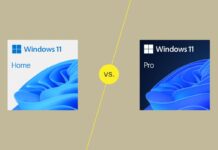
When it comes to selecting the best Learning Management System (LMS) for your organization, it is easy to get flummoxed by the number of considerations that you need to make. The following article by Gyrus Systems will provide a check-list of different features that you should look out for, before purchasing the LMS. The following is the list of such Learning Management System features:
Functionality
There may not be a perfect LMS, but there could be one that could be perfect for your requirements. Such an LMS would need to have all the functionalities that you require to implement your T&D activities as planned. Also, the LMS should be scalable, as if the LMS cannot support your organization as it grows, it would not be a long-term solution to address your T&D needs.
Course Design
Trainers may want to impart training to intended trainees through different types of sessions (such as instructor-led live training, pre-recorded lectures, presentations with voiceover, and so on). An LMS should provide the ability to create customized course designs with enough customizable built-in templates. You can check out the list of best courses online on eduardklein.com.
Personalized Learning Paths
No two learners are the same. Different learners would want to take the same set of courses in a different order, may want to focus on some topics more than others, and so on. A Training Management System should be able to support learners by providing the option to create personalized learning paths so that they can take their assigned learning modules in the way they wish to, so as to maximize effectiveness.
Assignments for Knowledge Retention
When it comes to conducting training exercises, it is essential for trainers to determine how well their target audience i.e. trainees have assimilated the information. Therefore, an LMS should offer the feature by which differently designed tests could be administered.
Accessibility of Content
These days, employees prefer to use their own devices for working (BOYD). Because different employees have different preferred devices, they should be able to access the courses administered over an LMS on different devices (Laptops, tablets, smartphones) which would have different operating systems (Windows, Android, Mac). An LMS should be compatible with different operating systems and devices so as to enable employees to take training modules at any time, from anywhere.
Reporting and Analytics
It is essential for trainers to be able to track the progress of different employees on an individual level on different training programs. Also, managers would be interested in knowing the effectiveness of the learning modules that team members under them are taking. Therefore, an LMS needs to incorporate reporting and analytics features that would allow for easy monitoring of such aspects on a dashboard. In fact, this would be one of the most vital features of the Learning Management System that you could have.
Security and Privacy
An LMS that is going to be used by employees located in different geographies would need to have an online mode of operation. These days, increasingly, LMS products are based on cloud to reduce the necessity to maintain physical data storage devices. In addition, this would also have a lot of employee data and other confidential company information. It is therefore essential that the LMS is highly secure and has privacy controls and password-protected logins.
Access Control
Not everyone in the company needs to/should have access to all the information. When implementing such a system, you need to be able to have control over who can access what learning modules, and so on. Therefore, an LMS should enable administrators to control access to different learning modules in an easy manner.
Ease of Communication and Collaboration
In order to improve retention and to build a team-spirit, it is essential to facilitate peer-to-peer interaction when it comes to undertaking training. Also, an LMS should be able to facilitate easy communication between trainers and trainees for easy resolution of doubts. Therefore, the LMS needs to include features such as group discussion boards, learning events, and chat interface, and so on.
Ease of Data Migration
You might already have a lot of training content on physical storage devices or on legacy platforms. A system that you plan to invest in should facilitate the easy migration of such data from old systems on to the new software.
Built-in Motivation Tools
Business enterprises recruit people who are past the age where they would be enthusiastic to learn out of natural curiosity. As a result, the company LMS should offer features such as gamification and also have provision to conduct online contests so as to engage employees and motivate them to participate in the training exercise. A study conducted by Traci Sitzmann, faculty at the University of Colorado at Denver, found that when gamification principles were incorporated within the training exercise, factual knowledge level, skill-based knowledge level, and retention of information increased by 11%, 14%, and 9% respectively.
Push Notifications and Reminders
It is important that intended trainees are notified automatically when they are assigned new courses. Also, they should get periodic reminders regarding the courses that they are required to take within a specific time-frame. To enable the same, this system should incorporate the features of push notifications and automated reminders so that after assigning courses, trainers need not individually call trainees to inform them about the assignment of new course modules.
Ease of Use
Any product, technical or otherwise, needs to be easy to use for the end-user, and an LMS is no exception to it. A Brandon Hall Group study determined that almost half of American companies that use LMSs are looking to change their system. Among the ones who wanted to make this change, 86% said that the reason for their decision was a complicated interface. There is no point in having an LMS with fascinating features but a non-intuitive UI that is cumbersome to use. The system should be easy to navigate and customize as per the organizational needs.
E-Commerce features
These days, there are companies that offer different courses to people beyond their existing employees. Offering such courses which are oftentimes subscription-based could help companies have an additional revenue channel. To facilitate this, it should incorporate features such as payment gateways and e-cart and should allow the company to market different courses within the platform.
Brand Integration
Branding a company’s systems is an important tool for marketing to the company’s internal customers (i.e. employees). Therefore, an LMS should allow integration of the brand aspects within itself, such as the business logo, layout, color scheme, and so on. This is also important if you plan to design courses that you plan to allow open access to people outside the organization as well.
It is essential that the LMS that you plan to opt for has all the above features so as to be a one-stop solution for all your T&D requirements. Not only would all the above features of LMS significantly streamline the management of training activities, but it would also ensure that employees participate in such activities far more enthusiastically than before.















